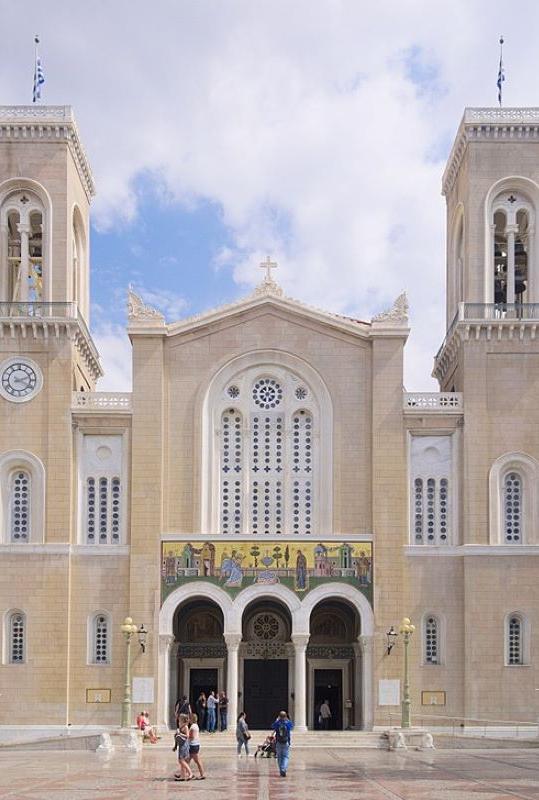
One for all, all for one
The Cathedral Church of Athens
The Metropolitan Cathedral of the Annunciation is a three-aisled, domed basilica. Construction began on Christmas Day, 1842. The Danish architect Theophil Hansen envisioned a Gothic cathedral, but he was unable to complete the project. Dimitris Zezos, who replaced him, designed a church in the so-called Greek-Byzantine style with strong neoclassical elements (marble windows, tall bell towers, marble antefixes). The cathedral was the largest church in Athens and the cost of construction was too much for the country. The authorities decided to demolish 72 Byzantine and post-Byzantine churches to use their stones as building material. It took twenty years for the construction of the cathedral. On May 21, 1862, King Otto and Queen Amalia dedicated the church to the Annunciation of the Mother of God.





